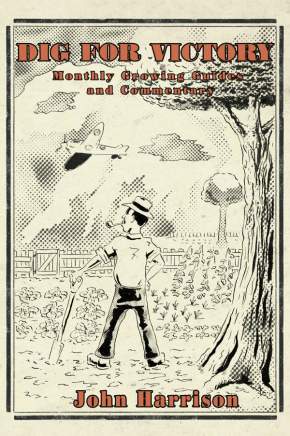Have you got those SEEDS?
 Perhaps if the weather is suitable, you will be sowing broad beans (unless black fly has broken your heart!) and spinach in February––and planting shallots and Jerusalem artichokes (if you like them). Have you got these items or ordered them? If not, get busy. And if you have planned all you are going to grow this season, order all your requirements right away from your seedsman or nurseryman.
Perhaps if the weather is suitable, you will be sowing broad beans (unless black fly has broken your heart!) and spinach in February––and planting shallots and Jerusalem artichokes (if you like them). Have you got these items or ordered them? If not, get busy. And if you have planned all you are going to grow this season, order all your requirements right away from your seedsman or nurseryman.
The value of a good strain of seed is tremendous, so deal with a good supplier. And, if you have not already done so, write for his catalogue without delay. You may not be able to get your favourite varieties, but the catalogue will show you what is available, and your supplier will advise you about suitable alternatives to your favourites. And use the order form he supplies: it is more easily dealt with than an order written on odd pieces of paper. Be patient with the seedsman and don’t worry him by constant reminders. He’s got his troubles, too.
Don’t forget to “sprout” your Seed Potatoes
 If you haven’t ordered your seed potatoes, do so at once. As soon as they reach you, set them up to sprout (rose end uppermost) in shallow boxes in a cool (though frost-proof), dry shed, where they can get plenty of light and produce the short, sturdy shoots that make for earliness and high yield. Don’t let them get even slightly chilled, for that’s enough to kill the “eyes”.
If you haven’t ordered your seed potatoes, do so at once. As soon as they reach you, set them up to sprout (rose end uppermost) in shallow boxes in a cool (though frost-proof), dry shed, where they can get plenty of light and produce the short, sturdy shoots that make for earliness and high yield. Don’t let them get even slightly chilled, for that’s enough to kill the “eyes”.
Have you got your NATIONAL GROWMORE FERTILISER?
You will need it for dressing your land before sowing and planting. It contains the three essential plant foods in balanced proportions, and 42 lb. is enough for 300 square yards. The January “Guide” explained how it should be used.
OTHER REMINDERS
Finally, see that your tools are in good condition for use. When you start outdoors you will need a line for straightness and pegs to mark the rows. And you would find a 6-ft. rod, marked off in 6in. and 3 in. sections, very useful.
And continue to have a look at your stored crops to see that there is no damage or decay. Rub off any potato sprouts on your eating crop in store. Lift any outdoor parsnips to check growth, storing them under protection at the north side of a fence or wall, if you can.


